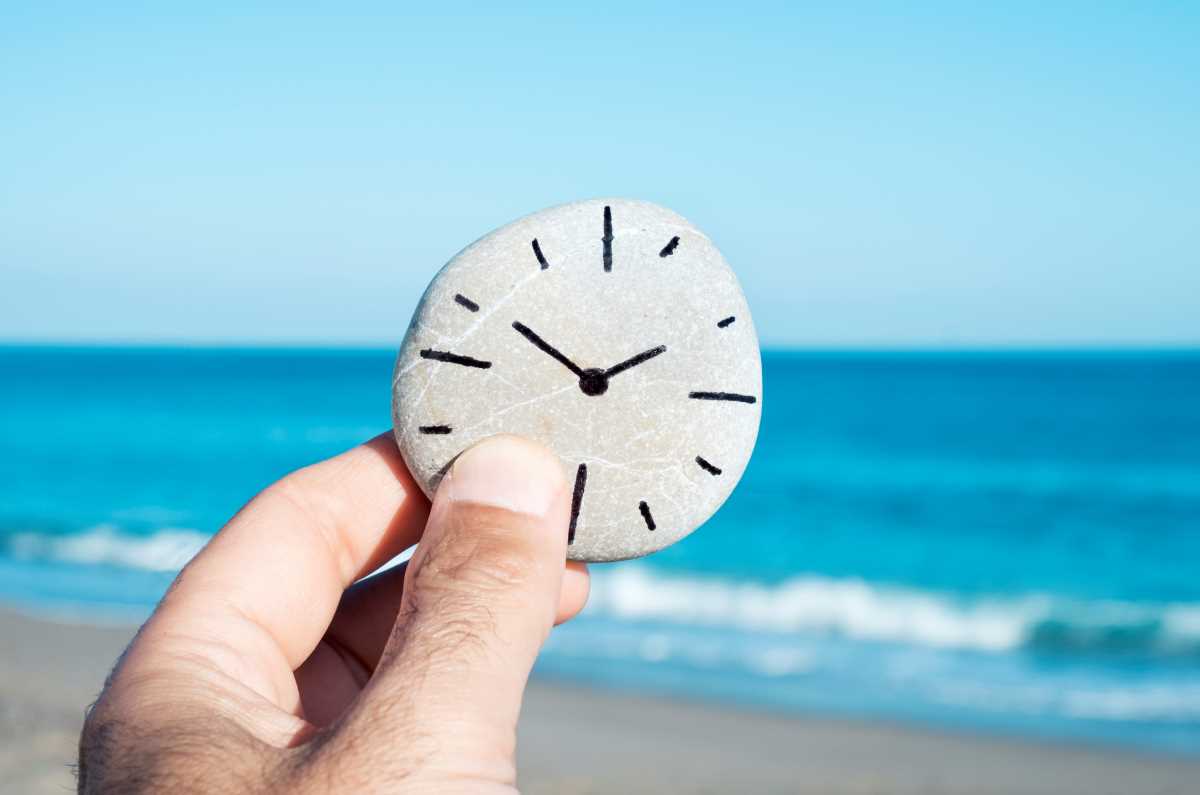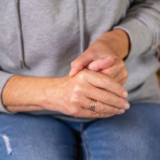It’s hard to believe we’re already halfway through 2023 😮.
I don’t know about you, but after years of forced-slowness I’m finding life incredibly busy and fast! Catching up with friends and family, working in the office, weekend adventures, professional development, hobbies, looking after my health – it can be a bit overwhelming. And when I’m feeling overwhelmed, I feel more pain, fatigue and anxiety.
Which is a problem 😕.
But I know from experience that having someone tell me to just relax or breathe 😑 isn’t going to help at the time. Especially if I’m already feeling time-poor and stressed.
What I have found works is taking advantage of micro-moments for self-care. Small pockets of time when I can look after myself.
Using these small moments for ‘me time’ is much more achievable than trying to shoehorn 30 minutes of yoga into my crowded mornings or planning and cooking MasterChef-worthy dinners every night 👩🍳. Using these moments for small acts of self-care to do what I need has really helped. I’m finding improvements in my anxiety, sleep quality, and pain.
But don’t just take my word for it. The World Health Organization (WHO) says the “sustained adoption of quality, evidence-based self-care interventions can reduce mortality and morbidities and improve health and wellbeing”. (1)
You too can maximise these micro-moments and reap the benefits of regular self-care. They can be done anywhere, anytime, and won’t cost you a thing. Here are some of our ideas for embracing micro-moments.
Get physical.
We talk about exercise a lot, but it really is a great way to look after your physical, mental and emotional wellbeing. Small bursts of activity can be added to your existing exercise routine for fun and to mix things up 🏃🤸🚴. Or if you’re not exercising regularly, they can help ease you back into becoming more active.
Exercise is so adaptable. You can do it on your own or with others. You can take two minutes to stretch and move at your desk or dance in your lounge for an entire song. You can take a short walk in your local park, mow your front lawn (unless it’s enormous – in which case, mow a section), clean out a cupboard, or do a five-minute cardio blast. Whether it’s structured or incidental exercise, it all adds up. And as they’re micro-moments, they aren’t large blocks of time. So you’re more likely to fit them into your day, less likely to become fatigued or strain yourself, and still reap some of the benefits of being active. And you may have a tidy cupboard or freshly mown lawn at the end! 😉
Breathe.
I know, I know. At the start of this article, I said that when someone tells me to breathe, it doesn’t work. But that’s usually regarding a ‘just breathe, Lisa’ when someone cuts me off in traffic 😣.
Now I’m referring to focused and controlled breathing. It’s a simple and effective technique to relieve pain and stress that can be done anywhere and at any time. You can do it at home, at work, on a train, in a waiting room, or in your car in traffic 😉. It’s useful when you’re trying to sleep or waiting for your pain meds to kick in. We take breathing for granted and often forget how effectively it relieves stress and anxiety. So remember to breathe…
“Breathing in, I calm body and mind. Breathing out, I smile.
Dwelling in the present moment I know this is the only moment.”
Thich Nhat Hanh
Use your senses.
I love this one 💜 and use it a lot. It’s where you use your five basic senses – touch, sight, hearing, smell and taste – to identify things in your current space that relate to those senses. You can find one thing per sense – for example, I can feel the warmth of my heat pack on my shoulder, I can see leaves falling outside my window, I can hear my cat running around the house like a lunatic🐈, I can taste my tea, and I can smell the orange oil in my candle.
Or you can try the 5, 4, 3, 2, 1 method. For example, 5 things you can hear, 4 things you can see, 3 things you can feel, two things you can smell, and one thing you can taste. And mix up the senses and numbers of things you’re finding depending on your situation. For example, when eating lunch, switch it to 5 things you can taste, 4 things you can smell, etc. It’s a great way of focusing on what you’re doing at that time.
Do a body scan.
The body scan is a type of meditation where you mentally scan your body from head to toe, paying attention to how each part feels. It helps you relax, become more aware of your body, and brings a sense of calm to your mind. Check out our short body scan script to help you get started.
Use your imagination.
What works for me won’t necessarily work for you. Plus, you don’t want things to become stale and boring. So mix it up. Read a chapter of a book, make balloon animals, do some guided imagery, call a friend, plant a herb garden, knit, paint, sculpt, fly a kite, breathe deep of your first morning coffee… whatever makes you happy, relaxes you, brings you into the moment, and sharpens your attention. Do it.
Focus on the moment and savour the experience.
With such busy, active lives, we often miss some of the small joys and experiences. So slow down and focus. For example, when you’re eating an apple, savour the feeling of the first crunchy bite and the taste as the juices burst into your mouth. Or when you head outside for a walk, breathe in the cool, crisp smell of winter… what can you smell? When you’re catching up with a friend, really listen to what they’re saying and enjoy their company – remember it wasn’t so long ago that we couldn’t meet in person 😔. Focus on the moments and enjoy them.
“What day is it?” “It’s today,” squeaked Piglet.
“My favourite day,” said Pooh
Piglet & Winnie the Pooh
Drink water.
When you’re busy, it’s easy to forget to hydrate. But it’s vital for our health and wellbeing. Water lubricates and cushions your joints, aids digestion, prevents constipation, keeps your temperature normal and helps maintain blood pressure. It carries nutrients and oxygen to your cells, flushes out toxins, and cushions the brain and spinal cord. It can also help prevent gout attacks, boost energy levels and fight fatigue. It’s practically magic! ✨ Make sure you grab your glass or water bottle and drink up throughout your day.
Go to the toilet.
I’m sure it’s not just me who gets caught up in work or another activity and thinks, “I’ll go to the loo as soon as I finish X, Y or Z”. But before you know it, you don’t just need to go, you really NEED to go 😶. And even though I’m pretty sure it’s a physical impossibility, I always have visions of Grandpa Simpson’s kidneys exploding from not going to the toilet. So please, just go to the toilet when your body tells you it’s time 😊.
Reflect.
When cleaning your teeth, think about your day. What are you looking forward to? What are two things you really want to achieve? What went well in your day? What two things are you thankful for? Take a small moment to reflect on your upcoming day or the day that’s been.
“Learn from yesterday, live for today, look to tomorrow, rest this afternoon.”
Charles M. Schulz
Leave your phone at home.
Relax!! I don’t mean all the time. (I had palpitations reading that too 😂😉)
Our phones are so much a part of our lives that it‘s hard to imagine not having them with us. But every now and then, leave your phone at home when you go outside. You won’t be distracted by the constant ring, dings, alerts and chirps it makes. And you can focus on the world and people around you.
Declutter.
Feel like you’ve got clutter and mess invading all of your spaces? Spend five minutes tidying one area and putting things back in their place. Do this once daily, and you’ll soon feel calmer and more relaxed. Don’t like cleaning? Pop on some music and do what you can in the space of one or two songs. Then stop cleaning, go do something else and enjoy the calm.
“Out of calmness comes clarity.”
Trevor Carss
Stretch.
Another one of my faves. Stretching is great for loosening up tight, stiff muscles and joints that have been in one position for long periods. I love stretching my arms above my head or arching my back when I’ve been sitting at my desk for some time and feeling stiff… bliss. It doesn’t take long, and it feels so good 😊
Versus Arthritis have some videos with various stretches for you to try. They’re a bit longer than a micro-moment but worth checking out. Watch them and find the ones that work for you. Or speak with a physio about stretches you can do daily to ease muscle tension and pain.
Hug someone.
Being able to touch or hug others reduces stress, anxiety, and depression and makes you feel good. And here’s a tip from me to you: don’t save your hugs for when you’re feeling down. Hug each other when you feel happy, excited, or just because it’s Wednesday 😍.
“A hug a day keeps the demons at bay.”
German Proverb
Plan a meal or two for your upcoming week.
Having an idea about what to cook during the week can be challenging and often stressful. But pre-planning a meal or two (or more if you’re able) can help immensely. Think about your week ahead – what are your time commitments and responsibilities? Do you have time to be creative and adventurous with your meal planning? Or do you need to keep it basic and simple? What do you have in the fridge, freezer and pantry? Once you’ve established all that, write down some meal ideas, pick up any extra ingredients you need, and you’re on your way!
Give yourself time.
Hands up if you’re often rushing from pillar to post, trying to get everything done in the shortest amount of time ✋✋✋. It can be hectic and exhausting.
When you can, build some extra time into your work commute and school drop-off/pick-up to allow for the inevitable traffic issues, lost schoolbooks, and forgotten lunches, so you can arrive at your destination as calmly as possible. Do the same at work – avoid back-to-back meetings when you can so you can catch your breath, write down your thoughts, drink water, have a snack, review your notes etc. This will make you more productive and less stressed.
Get changed.
Is there anything more wonderful at the end of a long day than getting changed out of your work clothes and getting into something relaxing and comfy? Especially now that winter is here? Whether it’s your favourite trackies, or the most relaxing of all, your oldest, softest pyjamas 😊, when you’re at home and in the cosiest clothes, all feels calm and right in the world.
Finally.
As with any changes to your habits and behaviours, you need to start small. Pick one of these ideas, or one of your own, and start adding it to your day. Just a micro-moment here and there. Over time you can add others and/or more time to the ones you’re doing.
Changing the way you do things takes time, patience and practice. But it’s worth persevering to reap the rewards of these small acts of self-care 💚.
Oh, one last thing.
It’s important to recognise that self-care can’t and won’t solve everything. Sometimes we need help – whether for an exercise program, mental health, housework, or whatever. This help may be from our family or friends, or it may be professional help. Don’t be afraid to ask for it.
Contact our free national Help Line
Call our nurses if you have questions about managing your pain, musculoskeletal condition, treatment options, mental health issues, telehealth, or accessing services. They’re available weekdays between 9am-5pm on 1800 263 265; email (helpline@msk.org.au) or via Messenger.
More to explore
- 10 micro-changes to kick-start a healthier you
Age Sister - 10 self-care micro-habits to transform your day
Self-care Society - 24 self-care tips for anyone living with chronic pain
BuzzFeed - 6 research-based self-care tips
Psychology Today - The power of micro acts of self-care when you’re ‘crazy busy’
The Work Psychologists - The power of pausing: Embracing micro-mindfulness
Medito Foundation - Want to make healthy changes in your life? Start small.
Musculoskeletal Australia
Reference
(1) Self-care interventions for health, WHO, 2022.

















